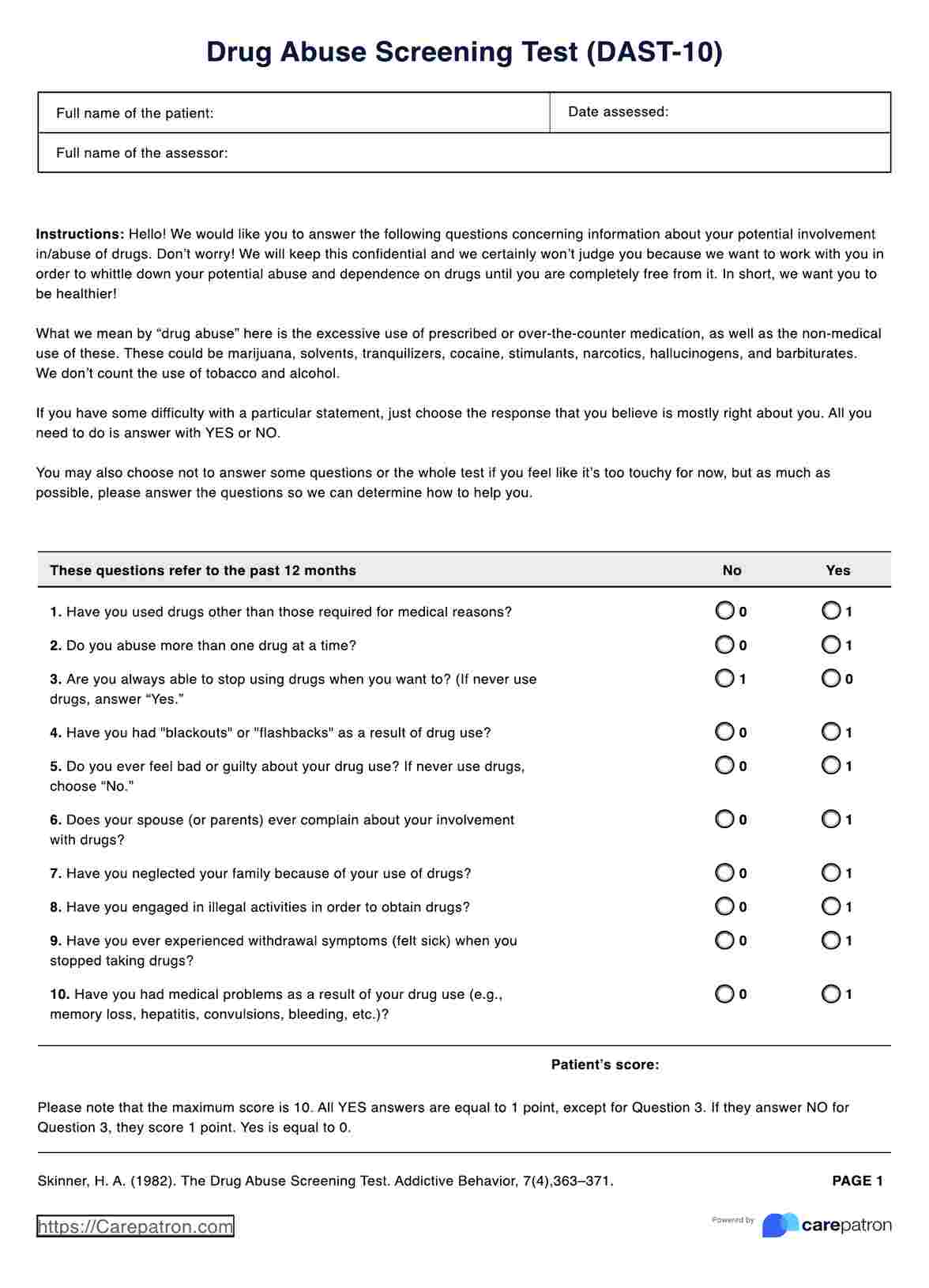No. The DAST-10 Test is a screening tool, not a diagnostic tool. It is used to help you determine what courses of action you should take when it comes to the patient you are evaluating. Did their score fall under the substantial or severe level Then they require more comprehensive examinations for a diagnosis, and a corresponding treatment plan can be made.

Drug Abuse Screening Test (DAST-10)
Use the DAST Screening Tool to assess a patient’s potential involvement with drugs, specifically if they have been abusing the use of drugs for the past twelve months before screening them.
Drug Abuse Screening Test (DAST-10) Template
Commonly asked questions
Yes. Like with any clinical document, their answers and the information provided by you via the Additional Comments section should be kept confidential to you, the patient, the patient’s relatives or trusted companions (if applicable), and members of your staff assisting you with your patient.
This test and its questions were created so that the types of drugs the patient is (potentially) abusing doesn’t matter, which means they are general enough to cover a broad range of drugs and problems that arise from the abuse of drugs. Just remember that this doesn’t cover the use of tobacco and alcohol.
EHR and practice management software
Get started for free
*No credit card required
Free
$0/usd
Unlimited clients
Telehealth
1GB of storage
Client portal text
Automated billing and online payments











